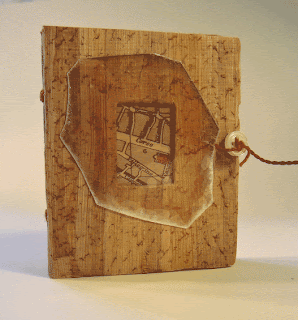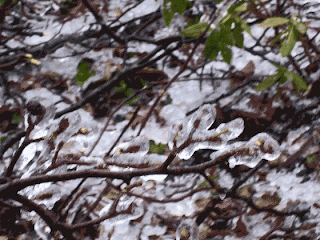 The book for Day 2 in Dan Essig's Book-a-Day class (see my earlier post for more about the class) was a small papyrus book with a coptic binding. To make each cover we adhered a sheet of papyrus to cardboard, then folded it in half. (You can use heavyweight card-stock or light-weight board instead of the cardboard.)
The book for Day 2 in Dan Essig's Book-a-Day class (see my earlier post for more about the class) was a small papyrus book with a coptic binding. To make each cover we adhered a sheet of papyrus to cardboard, then folded it in half. (You can use heavyweight card-stock or light-weight board instead of the cardboard.)We treated the covers as signatures, sewing through the fold in each cover. At the end, we glued the sides of each cover together. For a papyrus book I made in another of Dan's classes, we laminated 8 sheets of papyrus together, omitting the cardboard altogther, then folded the laminated sheets in half.
Leaving each cover open until the end has several advantages. You can pierce the outer side of each cover to sew in a button or bead (front cover) and tie in a thread or cord (back cover) to wrap around your button for a closure. If you have sufficient thread after you tie off your binding, you can also bring the thread through the back cover and use it as the tie for your closure. And you can cut a window in your front cover and put an image behind it, sandwiched between the two parts of the cover.
Are you thoroughly confused yet?
I used a piece of mica on the cover over the image, running PVA along the inside edges to secure it. It makes the book a bit more delicate, since the mica is raised above the cover, but I like the look.
I learned a couple of interesting things about papyrus during the class: first, papyrus is not paper; it's wood -- essentially, very thin plywood; second, it has no grain. By nature, it wrinkles and buckles when it encounters moisture (such as PVA), which to me is part of its charm.














